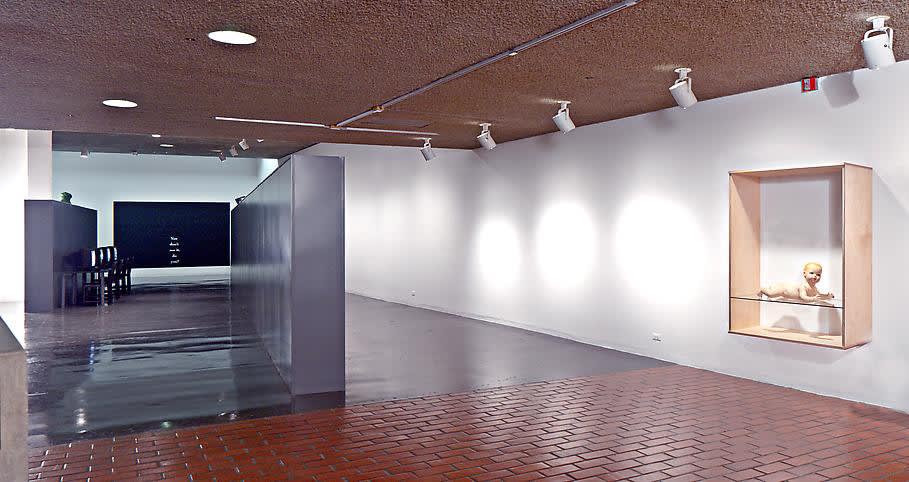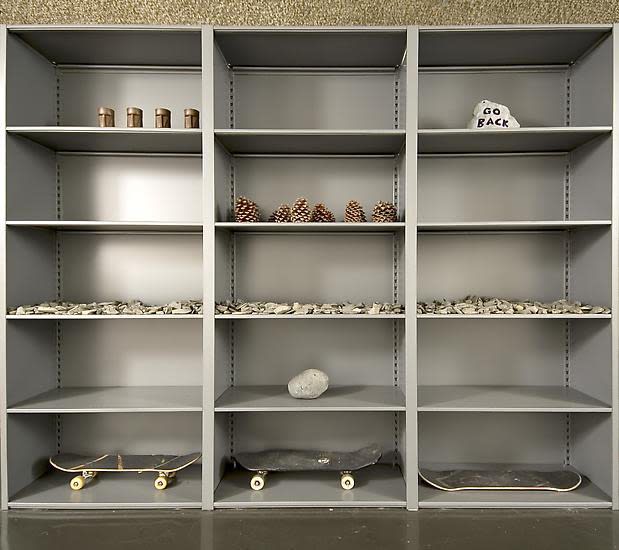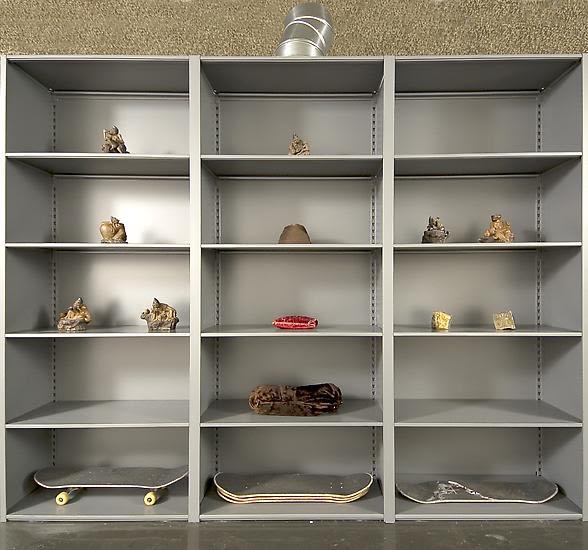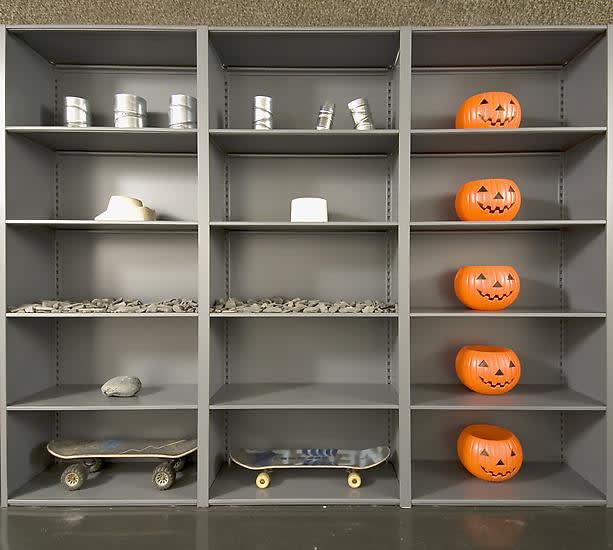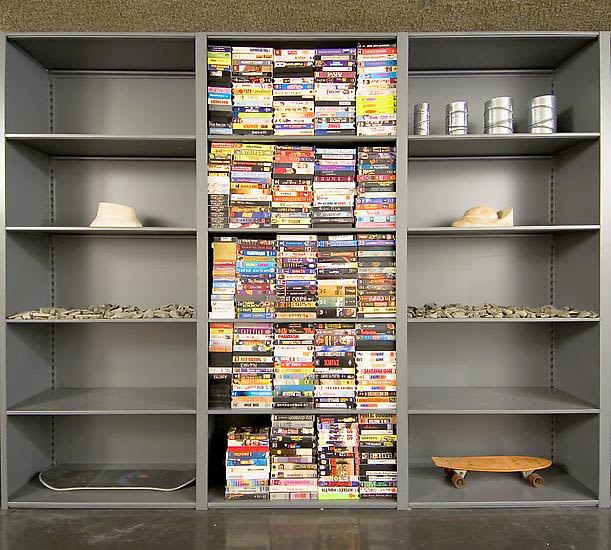HAIM STEINBACH: MATRIX 217: BERKELEY ART MUSEUM
What do the things we own say about us? From the objects with which we choose to surround ourselves, something about our secret lives can be known: who our ancestors are, what our fantasies are, how much money we have or want. In 1979, Haim Steinbach had a show at New York's Artist Space that commenced his career. For that exhibition, he installed wallpaper in the gallery, borrowed objects from friends, and placed the items on shelves. By the late 1980s, Steinbach was recognized as one of the world's leading contemporary artists, known for having radically redefined the status of objects in art. But Steinbach was lumped together with artists ranging from Jeff Koons and Barbara Kruger to Peter Halley and Ashley Bickerton, with whom he shared a method-appropriation-but not intention. The term Neo-Geo and the association of consumerism, simulation, and commodity were indiscriminately assigned to his work along with the others'. In a famous 1986 roundtable titled “From Criticism to Complicity,” Steinbach distinguished his approach when he spoke of the role of desire in his work. In a recent interview in Artforum, he elaborated: “Desire translates into the things with which we ritualize our lives and into the way we communicate and portray ourselves through objects.” Steinbach works with existing objects, but his process goes beyond the Duchampian model to issues of display. Essential to his arrangements are the structures in which the objects are placed: hard-edged, minimalist shelves, immense industrial shelving units, or rooms to enter. Some objects are found, others borrowed or bought, among them old mattresses, figurines, Nike shoes, and dustbins. Through their selection, arrangement, and perhaps most importantly, their juxtaposition, Steinbach explores their cultural, psychological, and ritualistic meanings. The associations, narrative or otherwise, are sometimes immediately comprehensible, at other times oblique, but in them the myriad attributes of modern living are illuminated. Steinbach “curates,” or collects and presents, groupings of objects in large-scale architectural interventions; the viewer is invited to move through these environments. Precursors to his MATRIX installation include Black Forest Wall (1992), Eadweard Muybridge, Michael Snow, and Haim Steinbach (1995), and Display #41 Mothers, Daughters, Children (1997). The artist's most recent projects circle back to his early practice of borrowing objects, as opposed to buying or finding them, and lately he has been interviewing the owners about their assigned personal meanings. For North East South West (2000), he borrowed objects from people in Berlin and Munich and installed the interviews along with them. (He showed videotapes of the objects in their original settings in the people's homes on television monitors in the gallery; viewers could listen to the lenders' narration on headphones.) He is currently working on a similar project in Vienna titled Objects for People. His Berkeley project, Work in Progress: Objects for People-Snapshots, will increase our awareness of how the objects that make up our lives mandate our daily rituals. We are not only what we eat, but also what we own, each of these choices stemming from individual desire. Steinbach, who was born in Israel in 1944 and settled in the United States in 1962, has a vast exhibition history. MATRIX 217 will be his first one-person museum exhibition in the United States. Heidi Zuckerman Jacobson Phyllis Wattis MATRIX Curator
